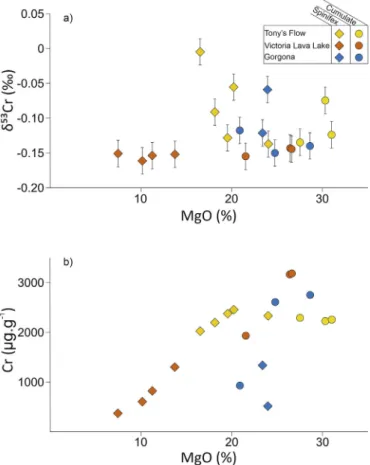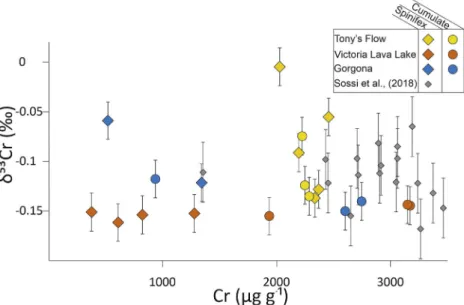The δ53Cr isotope composition of komatiite flows and implications for the composition of the bulk silicate Earth
Texte intégral
Figure




Documents relatifs
Figure 3: Sulfur isotopic composition of the water soluble fraction in enstatite chondrites and
Demyelination of the corpus callosum triggers SVZ-NPC migration to ectopic locations and their recruitment by the lesion, suggesting a possible role for Slit1 in SVZ-NPCs
microelectrodes array for neural interfacing. Graphene devices for life. Technological developments and future perspectives on graphene- based metamaterials: a primer for
Table 3: Multivariate associations between infant feeding patterns and family characteristics in EDEN cohort
The aim of the paper was to discuss the usefulness of accounting for the Fresnel volume (FV) and for the Interface Fresnel Zone (IFZ) for simulating the amplitude of the
Dans la production contemporaine d’œuvres « temps réel », la partie électronique est le résultat d’un processus complexe d’élaboration impliquant le compositeur, le
While the energy fluxes are similar in all simulations, the physical mechanisms that govern the evolution of the helicities are markedly distinct from one simulation to another:
Temporal trends, sources, and relationships between sediment characteristics and polycyclic aromatic hydrocarbons (PAHs) and polychlorinated biphenyls (PCBs) in sediment cores from